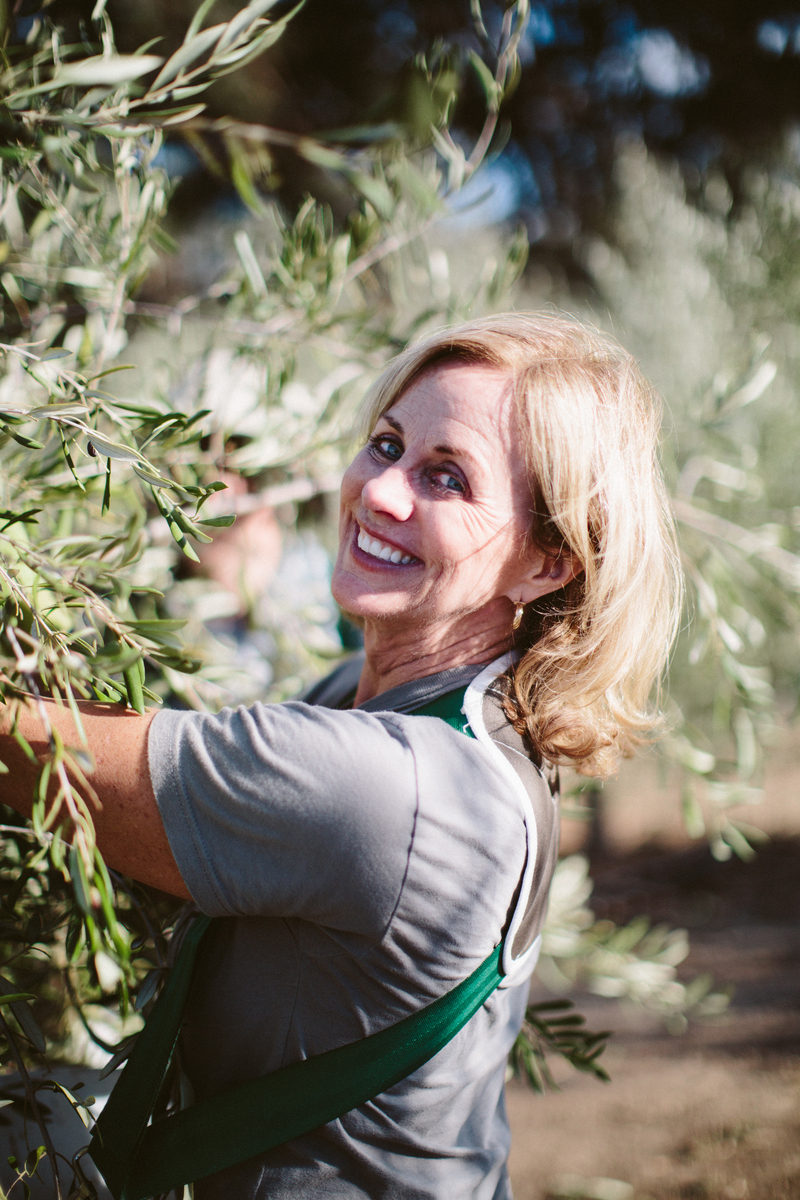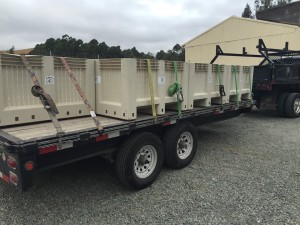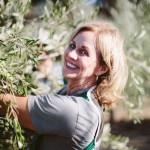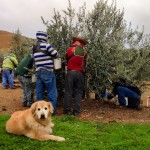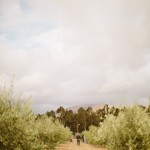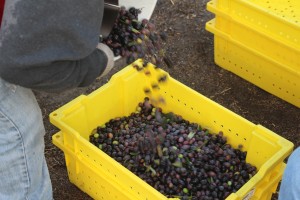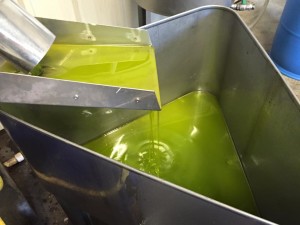It was dark and quiet when I arrived at the Goble Ranch on Sunday morning. Not yet even a glimpse of the coming sunrise, only the owls in the eucalyptus grove calling “hoo hoo” as they wrapped up a night of hunting. It was eerie in some ways, beautiful in others.
I opened the D’Oliva shed doors, flipped on a few lights, and started setting up for the days olive harvest. Yellow lugs were placed at the end of each row, a cooler of drinks set out, the ATV gassed and ready. Soon the crew began arriving, a parade of vehicles streaming in with headlight beams bouncing off the old sheds. Then Jose, our caretaker, came over to help.
The sun was just beginning to show signs of rising when D’Aun arrived, followed quickly by our friend Paul. A few minutes past seven and the crew put on belly buckets. The crew chief, Matt, asked D’Aun for instructions on where to start, and then they were off and working. It was still chilly so they were wrapped in an odd assortment of jackets, scarves and hoodies.
D’Aun identified one tree she wanted to do by herself. This would give an idea of how long each tree would take and how many pounds each would produce. Two months earlier an olive consultant, Guillermo, had looked at the D’Oliva grove and predicted 25 pounds a tree (around 8100 pounds total). So D’Aun was eager to benchmark one tree. Two hours later she gave in and asked for help, but she had most of it done by then. It had 56 pounds of olives — which meant, if it was the average, we would get a whopping 18,000 pounds of olives! That was great, but how would we get everything harvested in one day?
By mid-morning our friends and family began arriving. It was a family affair, with kids and dogs running around. All the workers, amateurs or professionals, would focus on one row at at time and bring their hand harvested olives to the end of the row to pour into the yellow lugs. Paul and I collected the lugs, weighed them to record the total from the row, then poured them into larger bins already strapped to a trailer.
By noon it was clear we would have a great harvest, our best ever, but it wasn’t going to be the 9 tons the one test tree indicated. In hindsight it seems D’Aun chose one of the fruit richest trees to measure, which explains why it took so long! We were averaging about 25 pounds a tree, for a more realistic 4 ton harvest. It was still going to be close to see if we could finish by sunset.
The day moved on and the afternoon warmed up. Friends and family came and went according to their personal schedules, the professionals kept at it with an occasional break, and Paul and I continued to lift, weigh, and lift again all those olives. Prosecco was served to the friends and family, which raised spirits (whether it increased performance is debatable). We were growing weary but the olive grove was slowly being conquered by the diligence of the harvesters.
In the late afternoon the friends and family crew retired into the shed, happy to have completed four rows (in the time it took the professionals to do nineteen). They ate cheese, salami and crackers, sipped prosecco, and asked D’Aun for the recipe to her amazing rosemary olive oil cake.
The professionals worked on and by 5 pm we knew we had the harvest nearly done. The crew slipped into overtime pay and kept going for another hour. Costly, but they worked diligently, and we got it all done. Even had extra time to pull a few overlooked olives off the nearly bare trees.
By 6:30 pm we could see the sun starting to set. The friends and family were long gone, the professionals were enjoying the cookies D’Aun shared with them, and the belly buckets were being put back in place. Paul and Jose put tarps over the bins, which were brimming with olives, and loaded 37 more yellow lugs into the back of the truck because we had run out of bins. Our initial estimate, using the little scale we had, was over 7600 pounds.
By 8 pm D’Aun and I were home, exhausted. My FitBit read 35,000 steps that day. But we knew the job wasn’t done quite yet. The next morning we met Paul and together we drove the olives to a nearby mill. They weighed the bins and came up with 7796 pounds. Thus 24 pounds a tree, very close to Guillermo’s prediction.
The olives were put into the mill, and an hour or so later the first oil was beginning to pour. It had the rich, buttery taste D’Oliva is known for. Will it be another medal winner? Too early to tell, but no doubt the olives looked great and the oil tasted wonderful.
Next the oil is racked, which simply means put into storage so the sediment can settle. In a few months it is bottled, labeled, and ready for consumption.
And then, and only then, you get a chance to enjoy it!

